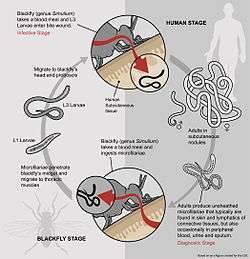Parasitic life cycles

Parasitic life cycles occur in a variety of forms, all involving the exploitation of one or more hosts. Those that must infect more than one host species to complete their life cycles are said to have complex or indirect life cycles, while those that infect a single species have direct life cycles.
If a parasite has to infect a given host in order to complete its life cycle, then it is said to be an obligate parasite of that host; sometimes, infection is facultative — the parasite can survive and complete its life cycle without infecting that particular host species. Parasites sometimes infect hosts in which they cannot complete their life cycles; these are accidental hosts.
A host in which parasites reproduce sexually is known as the definitive, final or primary host. In intermediate hosts, parasites either do not reproduce or do so asexually, but the parasite always develops to a new stage in this type of host. In some cases a parasite will infect a host, but not undergo any development, these hosts are known as paratenic[1] or transport hosts. The paratenic host can be useful in raising the chance that the parasite will be transmitted to the definitive host. For example the cat lungworm (Aelurostrongylus abstrusus) uses a slug or snail as an intermediate host; the first stage larva enters the mollusk and develops to the third stage larva, which is infectious to the definitive host—the cat. If a mouse eats the slug, the third stage larva will enter the mouse's tissues, but will not undergo any development.
See also
References
- ↑ Schmidt and Roberts. 1985. Foundations of Parasitology 3rd Ed. Times Mirror/Mosby College Publishing